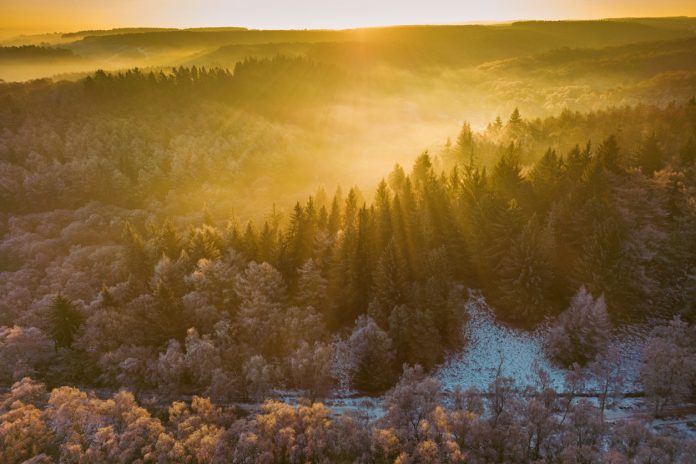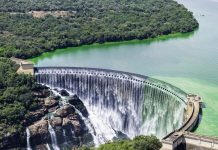As the climate and biodiversity crises worsen, we must rethink how we value forests, says Willem Ferwerda, Founder of Commonland. Can forests be foundations for regeneration and climate resilience?
As the climate and biodiversity crises intensify, we must urgently rethink about the value of forests. Too often mistaken for forests, plantations lack the complexity and resilience of old-growth and secondary forests, which provide essential ecological, cultural, and climate security benefits. In fact, many of today’s most destructive wildfires burn through degraded lands and plantations, not intact, mature ecosystems.
Forests are far more than carbon sinks or timber reserves – they hold ecological, social, cultural, and financial value. When we recognise and invest in this full spectrum of returns, forests become powerful foundations for regeneration and long-term climate resilience.
After decades of discussions, this shift is gaining traction in Europe, where policies like the EU Biodiversity Strategy for 2030 and the Regulation on Deforestation-Free Products align environmental protection with economic incentives.
But legislation alone won’t deliver the transformation we need. Real change requires a deeper shift: in how we perceive, fund, and tell the story of forests.
A new framework for evaluating the value of forests as part of a landscape
A more regenerative model for valuing forests considers four types of return on investment: natural capital, social capital, financial capital, and inspirational.
The natural return that forests provide is clearest in their vital services: regulating climate, purifying water, storing carbon, preventing erosion, promoting biodiversity and buffering floods. These are ecological functions and essential systems that support life, acting as green infrastructure. Unlike grey infrastructure such as dams or storm drains, forests deliver these services naturally, continually, and at scale while providing habitat for a vast array of life, maintaining the ecological balance on which we all depend.
The social return that forests offer can be seen in the connection, well-being, and shared identity that they provide. For example, in Vega del Codorno, Spain, a 30-year agreement to preserve a 264-hectare old-growth forest enables sustainable uses like mushroom foraging and eco-tourism.
The choice to restore and protect rather than extract the forest for financial return also offers the opportunity to reduce rural depopulation, which is accelerating across rural areas throughout Spain because of a lack of livelihood opportunities for youth due to environmental degradation.
Forests can also yield sustainable economic value without being cleared. Through mechanisms like carbon financing (such as REDD+) and water-based ecosystem services, forests can generate sustainable income by simply being kept intact. Forests can also yield sustainable value through the harvesting of non-timber forest products (NTFPs), such as wild mushrooms, medicinal plants, fibres, resins, and honey.
In India, NTFPs form the economic backbone of many Indigenous economies. Tendu leaves, used in handrolled cigarettes and mahua flowers, are processed into food, drink, and cosmetics and support millions seasonally. In some states in India, NTFPs provide about 40% of total official forest revenues and 55% of forest-based employment.
Lastly, beyond tangible resources, forests offer inspiration aplenty. They are places of wonder, creativity, and renewal and in many Indigenous cultures, a source of spiritual value. These less quantifiable benefits often become the seedbed for igniting regenerative mindsets and intergenerational care of the land – something I call the “return of inspiration”. When people feel a sense of awe, belonging, or meaning in the landscape, they are far more likely to become its caretakers.
Why a cultural shift matters for forest policy to succeed
A fundamental shift in the value of forests is essential to achieving the EU Biodiversity Strategy for 2030, which aims to restore 30% of degraded land and mobilise €20 billion annually for nature. The strategy encourages cities with over 20,000 inhabitants to develop Urban Greening Plans and blueprints for enhancing biodiversity and public health through accessible green spaces like urban forests. These efforts acknowledge that ecosystems, whether remote or urban, serve as vital green infrastructure for society.
To support these goals, the EU has enacted Regulation (EU) 2023/1115 on deforestation-free products, addressing one of the leading drivers of biodiversity loss: the EU’s role in global deforestation. This regulation prohibits importing and selling commodities linked to deforestation, applying both within the EU and to its global supply chains. By aligning market forces with restoration objectives, this legal tool has the potential to reduce greenhouse gas emissions, protect critical habitats, and curb biodiversity loss across global supply chains.
However, whether it delivers on that promise depends on regulatory compliance or enforcement, but also on a broader cultural and economic shift that moves beyond extractive mindsets and embraces a more holistic understanding of forest value. To make meaningful progress, we must all recognise and invest in the full spectrum of returns that forests can provide: from natural capital in the form of climate regulation and biodiversity to social cohesion, long-term financial resilience, and the inspiration that drives environmental stewardship across generations. When we expand our definition of value, we make space to protect the full richness of forests, not for what we can take but for all they offer.











